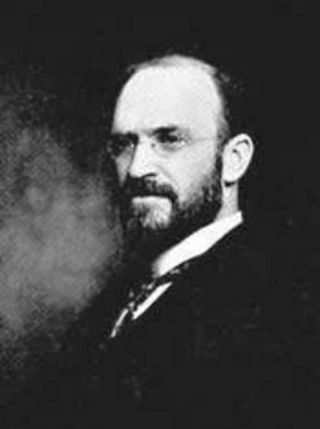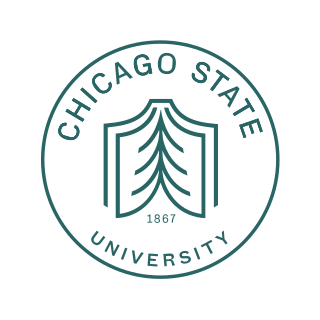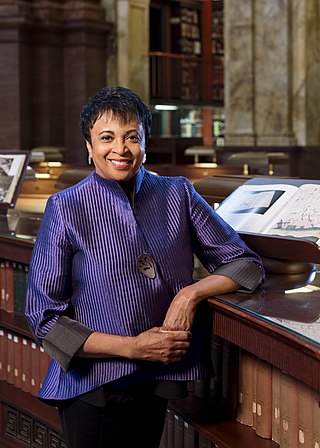Related Research Articles

Melville Louis Kossuth "Melvil" Dewey was an influential American librarian and educator, inventor of the Dewey Decimal system of library classification, a founder of the Lake Placid Club, and a chief librarian at Columbia University. He was also a founding member of the American Library Association. Although Dewey's contributions to the modern library are widely recognized, his legacy is marred by allegations of sexual harassment, racism, and antisemitism.

A librarian is a person who works professionally in a library providing access to information, and sometimes social or technical programming, or instruction on information literacy to users.

William Rainey Harper was an American academic leader, an accomplished semiticist, and Baptist clergyman. Harper helped to establish both the University of Chicago and Bradley University and served as the first president of both institutions.

Chicago State University (CSU) is a predominantly black public university in Chicago, Illinois. Founded in 1867 as the Cook County Normal School, it was an innovative teachers college. Eventually the Chicago Public Schools assumed control of the school from the county and it became Chicago Teachers College (CTC). Northeastern Illinois University began as a branch campus of CTC in 1949. In 1951, the State of Illinois began funding the college, and assumed control in 1965, transforming it into a comprehensive state college. In 1967, it became Chicago State University. CSU is a member of the Thurgood Marshall College Fund and accredited by the Higher Learning Commission.

Mary Salome Cutler Fairchild was a pioneering American librarian, educator, and school administrator. She is known for her contributions to the establishment of library science in the United States through her work at the Columbia College library and New York State Library School, as well as her service in the American Library Association.

The School of Information Sciences, also The iSchool at Illinois, is an undergraduate and graduate school at the University of Illinois Urbana–Champaign. Its Master of Science in Library and Information Science is currently accredited in full good standing by the American Library Association. The school is a charter member of the iSchool initiative.

The School of Library and Information Studies of the University of the Philippines or UP SLIS is the oldest library school in the Philippines. Formally established in March 1961 as the Institute of Library Science, it can trace it roots to 1914, making it one of the first library schools in Asia. It is an independent degree-granting unit of the University of the Philippines Diliman, and offers programs in the field of library and information science. In December 2015, the Commission on Higher Education declared the school as the first and only Center of Excellence among universities and colleges with library and information programs in the Philippines.
Education for librarianship, including for paraprofessional library workers, varies around the world, and has changed over time. In recent decades, many institutions offering librarianship education have changed their names to reflect the shift from print media to electronic media, and to information contained outside of traditional libraries. Some call themselves schools of library and information science, or have dropped the word "library" altogether.
Music librarianship is the area of librarianship that pertains to music collections and their development, cataloging, preservation and maintenance, as well as reference issues connected with musical works and music literature. Music librarians often have degrees in both music and librarianship. Music librarians deal with standard librarianship duties such as cataloging and reference, which become more complicated when music scores and recordings are involved. Therefore, music librarians generally read music and have at least a basic understanding of both music theory and music history to aid in their duties.
Peggy Sullivan was an American librarian and educator. She was elected president of the American Library Association and was a scholar of the history of librarianship.

Katharine Lucinda Sharp gained prominence as a pioneering librarian for her intense engagement with the library profession that spanned 19 years. Having founded the innovative University of Illinois Library School, she resigned from her position and left the library field as rapidly as she had entered it. She is remembered for ‘professionalizing’ the field of library science and for her considerable contribution to the standards of the discipline. In 1999, Sharp was named in the American Library Association's 100 leaders of the 20th century.

University of Chicago Library is the library system of the University of Chicago, located on the university's campus in Chicago, Illinois, United States. It is the ninth largest academic library in North America, with over 11.9 million volumes as of 2019. The library also holds 65,330 linear feet of archives and manuscripts and 245 terabytes of born-digital archives, digitized collections, and research data.

The University of Chicago Graduate Library School (GLS) was established in 1928 to develop a program for the graduate education of librarians with a focus on research. Housed for a time in the Joseph Regenstein Library, the GLS closed in 1989. GLS faculty were among the most prominent researchers in librarianship in the twentieth century. Alumni of the school have made a great impact on the profession including Hugh Atkinson, Susan Grey Akers, Bernard Berelson, Michèle Cloonan, El Sayed Mahmoud El Sheniti, Eliza Atkins Gleason, Frances E. Henne, Virginia Lacy Jones, Judith Krug, Lowell Martin, Miriam Matthews, Kathleen de la Peña McCook, Elizabeth Homer Morton, Benjamin E. Powell, W. Boyd Rayward, Charlemae Hill Rollins, Katherine Schipper, Ralph R. Shaw, Spencer Shaw, Peggy Sullivan, Maurice Tauber and Tsuen-hsuin Tsien.

Mary Wright Plummer was an American librarian who became the second female president of the American Library Association (1915–1916).
A librarian is a person who works professionally in a library, and may hold a degree in librarianship.

The Religious Education Association is the world’s oldest and largest association of scholars and researchers in the field of religious education. It is a nonprofit member association, serving as a professional and learned society for scholars and researchers involved in the field of religious education. It has several hundred members, most of whom are from North America, with a scattering of members worldwide. REA members are university and college professors, independent scholars, secondary teachers, clergy, church educators, curriculum developers, judicatory executives, seminarians, graduate students, and interested lay-people. REA members come from multiple faith traditions, and no tradition, and study a very diverse array of religious traditions. The REA's leaders are drawn from a distinguished list of educators.

Bartlett Gymnasium is a former athletic facility on the campus of the University of Chicago in Chicago, Illinois, United States, that has been converted into a campus dining hall.
Mary Elizabeth Downey was a librarian and activist who created and promoted library science education courses across the Midwestern and Western United States. She is regarded as a pioneer of the modern library movement.

Zella Allen Dixson was an American writer, lecturer, librarian, and publisher. She was the longest-serving director and associate librarian of the University of Chicago Extension Division's library school.

The College of Librarianship Wales was a monotechnic college specializing in library and information science in Aberystwyth, Wales, between its foundation in 1964 and August 1989, when it was merged with University College of Wales to become the Department of Information & Library Studies of that institution. During its twenty-five years of independent existence the college grew to be the largest library school in the UK and one of the largest in Europe. It also gained an international reputation for library education,
References
Notes
Bibliography
- Dixson, Zella Allen. Papers (1876-1910). Special Collections Research Center, University of Chicago.
- Fogg, E. "Courses in library economy." University of Chicago Weekly (February 25, 1897).
- Grotzinger, L.A. The power and the dignity: Librarianship and Katharine Sharp. New York: Scarecrow Press, 1966.
- Stauffer, Suzanne M. "'Mr. Dewey Is Crazy and Katharine Sharp Hates the University of Chicago:' Gender, Power, and Personality and the Demise of the University of Chicago Course in Library Science 1897-1903." Journal of Education for Library and Information Science 56, no. 2 (Spring 2015): 101-113.
- "University Extension Division." University of Chicago. Course in library economy. Chicago: University of Chicago, 1896.
- "University of Chicago library classes." Library Journal 22 (1897): 22.